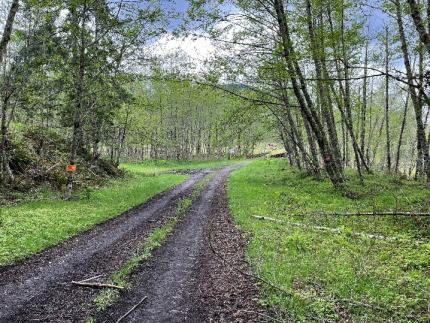
Wildlife Program report: May 1-15, 2024
Providing Recreation Opportunities
The Route Inventory and Trail Conditions Assessment contract process is wrapping up. The contract will go to Logan Simpson, a consulting company. They plan to start work asap.
Providing Education and Outreach
The Ambassador Program is underway at Big Valley, Pipestone, and Lewis Butte in the Methow Wildlife Area. We are partnering with Methow Valley Trails Collaborative to oversee the program. Programming for central Washington locations will start in June.
Conducting Business Operations and Policy
Signs and kiosks are constantly being designed and fabricated. Lands has decided to move forward with tribal narratives on three-panel kiosks.
Managing Wildlife Populations
Tucannon Bighorn Sheep: Wildlife Area Manager Dingman located the Tucannon bighorn sheep several times this week. Lambing should be happening anytime. There is only one ewe with a working collar currently. The ewes appear to be dispersing to get ready to lamb.
Golden Eagle Monitoring: Dingman checked the Cummings Creek, Merengo, and Hartsock nests this week. The Cummings Creek birds either did not nest or the nest has already failed this year. Both the Merengo and Hartsock nests have hatched, and each nest has at least one eaglet in it.
Five Sisters Wolf Pack: Biologists Lowe and Brinkman assisted Wolf Biologist Roussin with checking a trapline for wolves in the Five Sisters pack. One wolf, a 2-year old male, was captured and collared during this effort. The GPS collar attached to this wolf will help biologists identify core-use areas, and the approximate boundaries of this pack’s territory.
Sharp-tailed Translocated Grouse Update: So far, from the 30 Sharp-tailed Grouse that were translocated from British Columbia to the Swanson Lakes Wildlife Area office there have been two accounted mortalities. One of the mortalities was retrieved by the Region 1 assistant district biologist and frozen so that it could be transported to Washington State University for a full necropsy. The second mortality appeared to be a coyote predation.
Duck Banding: Wildlife Biologist Prince assisted Kalispel Tribe biologists with duck banding. The tribe is running a large-scale banding and radio-tagging project in collaboration with Washington Department of Fish and Wildlife.

Lincoln County Bats: Biologists Lowe and Brinkman captured bats at Rock Ranch in Lincoln County and obtained samples that will be tested for Pseudogymnoascus destructans (Pd), the fungus that causes white-nose syndrome in bats. White-nose syndrome has not been detected in bats in Lincoln County; however, surveillance efforts are critical to early detection of Pd. Other Washington Department of Fish and Wildlife staff members, Bureau of Land Management employees, and a professor and students from Eastern Washington University assisted with the capture effort.
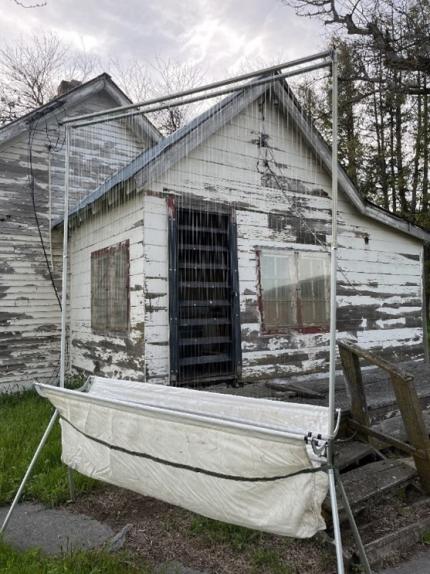

Providing Recreation Opportunities
Boggan’s Access Site Improvements: Access Manager Heimgartner ordered six truckloads of gravel for the Boggan’s Access Site using recent new supplemental budget funds. Natural Resource Technician Nielsen later used the access area tractor to complete the gravel spreading project. They anticipate there may be a few more gravel deliveries made with the goal of covering the entire site with a new surface.
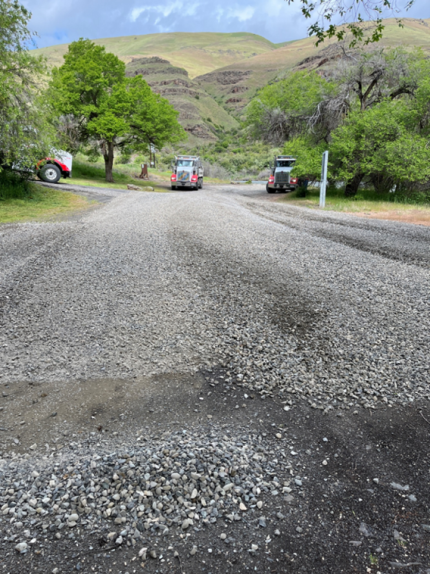
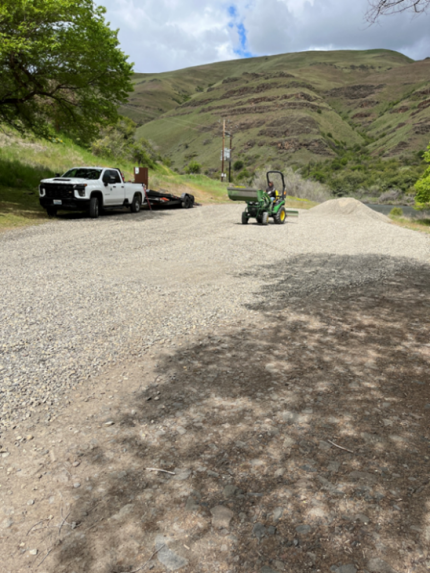
Access Areas Spring Opening: North Region 1 Water Access Area Manager Dziekan and his assistant, Natural Resource Technician Brant, had the summer seasonal access areas ready for this week’s opener. Dziekan noted that he typically sees heavy site use with the spring opener, but based on the condition of the toilets, that appeared not to be the case this week. This will probably change once the weather starts getting a bit nicer. Over the week, Dziekan and Brant conducted routine activities such as cleaning restrooms, picking up litter, and applying herbicide to weedy areas.
Turkey Access: Private Lands Biologist Nizer answered phone calls and emails regarding turkey access and gave advice to turkey hunters wanting to hunt in Whitman and Spokane counties. Nizer spoke to a hunter and directed him to a property enrolled in the Hunt by Written Permission Program. The hunter came from Alabama to hunt turkeys and was successful on the property.
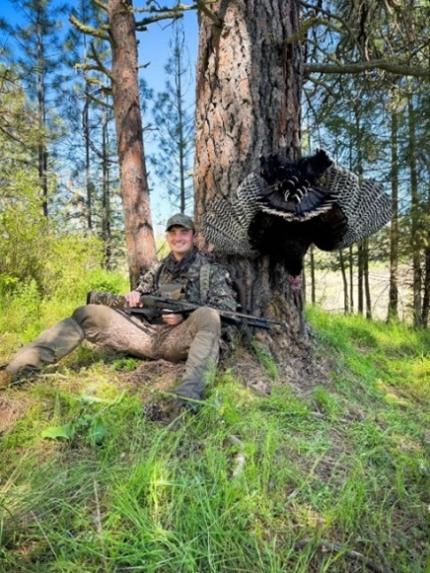
Recreation Access Site Maintenance: Heimgartner and Nielsen worked together to clean access sites across the district from Heller Bar and the Grand Ronde River to the Wooten Wildlife Area campgrounds. They picked up trash, sprayed weeds, and restocked supplies. They also cleaned the shooting ranges. Wade cut vegetation around the Asotin Creek shop and gate.
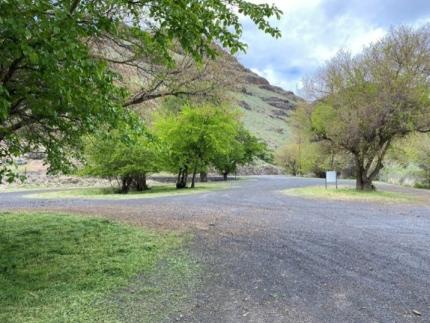
Reardan Audubon - Access Manager Dziekan and Natural Resource Technician Brant spent some more time out at Reardan Audubon lakes this week. There was an application of herbicide a couple weeks ago, targeting broadleaf and grass. This time around, the broadleaf control was very effective, the grass control was effective, but more grass started popping up since the last visit.
Brant focused on string trimming the entrance gate on the southern parking area, cutting down tall grass and dead weeds that had either previously been sprayed or blown in and gotten trapped on the fence. The string trimming work was done after the grass was mowed along the driveway leading to the property.
While Brant was working on beautification, Dziekan loaded up some glyphosate and worked on getting the areas of new growth. More work is planned for this site, but they wanted to eliminate the grass growing in the rip-rap rock along the trail. The northern parking area is looking great. Dziekan applied broadleaf herbicide last season along the trail and had good results.
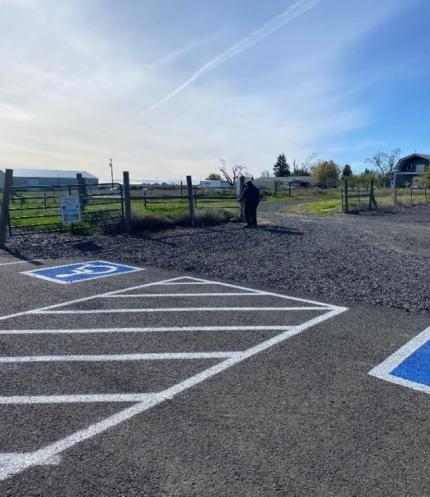
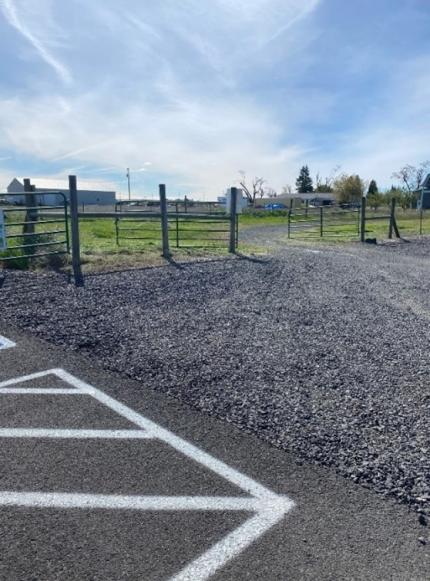
Providing Conflict Prevention and Education
Trail Camera Check. Wildlife Conflict Specialist Bennett worked with a livestock producer with concerns of a recent calf loss. A coyote was the only wildlife noted on the trail camera in Pend Oreille County.
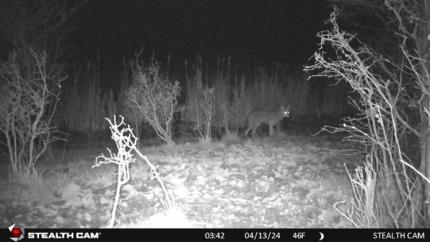
Cougar Activity: Washington State Department of Fish and Wildlife staff members trapped a juvenile male cougar in Columbia County. The cougar was in poor body condition and exhibiting behavior consistent with habituation. The cougar was transported to Department carnivore specialists for potential placement in a zoo or sanctuary.
Beaver Evaluation: Wildlife Conflict Specialist Kolb met with a beaver relocation specialist and conducted a site visit in Walla Walla County. Current beaver activity has damaged critical shade trees utilized by cattle in the summer and blocked the flow of water to an irrigation pump. Washington Department of Fish and Wildlife habitat biologists also assisted in providing near-term relief for the producer. Additionally, the beaver relocation specialist will meet with their team about long-term solutions for the problem area (for example a pond leveler/beaver deceiver).
Bear Concerns in Stevens and Pend Oreille Counties. Wildlife Conflict Specialist Bennett worked with eight landowners with bear damage questions and concerns. Information on deterrents and securing attractants were covered. Bennett also reached out to the local garbage disposal company on a long-term solution.
Conserving Natural Landscapes
Spring Habitat Work: Private Lands Biologist Nizer met with Private Lands Biologist Baarstad and Natural Resource Technician Keeling. Nizer assisted with planting 500 trees at a hunting access site. Nizer planned a last-minute spring planting at a Hunt by Written Permission property for clover and alfalfa. Nizer met with another landowner to discuss guzzler implementation for this summer.
Riparian Shrub Project: Wildlife Area Manager Finch and Private Lands Biologist Baarstad prepared a rototiller and attached it to the tractor and moved it to the project site south of Z-Lake. The site was sprayed out with Roundup so that it could be tilled before laying matting material. Region 2 Private Lands Biologist Braaten came to help lay the matting material. Plants were delivered from Plants of the Wildlife the following day. The Aquatic Lands Enhancement Account (ALEA) riparian shrub planting day with volunteers was on May 11. The Spokane Chapter of the Pheasant Forever Habitat Chairman Gruenke and the Spokane Audubon will be working together to complete this important winter habitat project.
The Pheasant Forever chapter listed this project on their national website. OnX is offering a chance to win a $7,500 grant for habitat projects so Pheasant Forever will be taking a lot of pictures. Pheasant Forever even mentioned this cooperative project may get published in the Pheasant Forever Magazine. It would be a great example of a cooperative project between Washington Department of Fish and Wildlife, Audubon, and Pheasant Forever.
Carcass Pit Retirement: The state Department of Transportation (DOT) has finished using its highway carcass drop pit off Trout Lake Road at Scatter Creek Wildlife Area, opting to take local roadkill to other disposal sites off Washington Department of Fish and Wildlife lands. DOT has covered the trenches, and Sherman Creek Wildlife Area staff members would like to implement a full site rehabilitation of the pit area, which had several trenches used over the decades. One option is to submit a grant to the state Recreation and Conservation Office (RCO) for the cost of planning and implementing the site work. Thanks go to Region 1 Manager Kuttel for working with DOT to get the pit closure implemented so quickly!
Smoothing Iron Ridge Field Work: Natural Resource Specialist Whittaker finished up spring planting of 50 acres of oats, ten acres of spring wheat, and 3.5 acres of a sunflower/millet/sorghum mix. He then cleaned up the equipment and put it in storage until fall planting time. A part broke on the drill and Whittaker and Wade worked together to reinstall a new part.
Whittaker reported seeing a cow and calf moose running across the hillside on the Asotin Creek Wildlife Area.
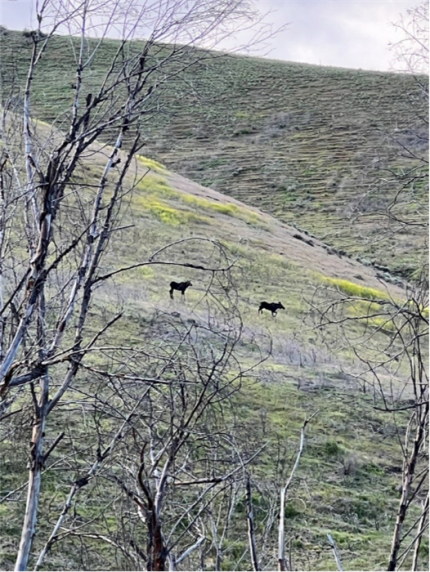
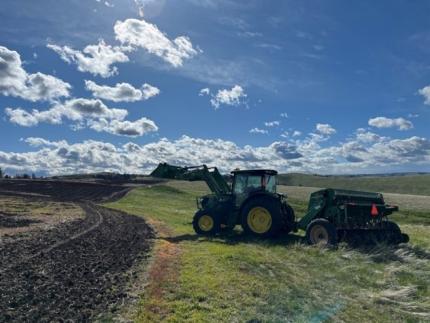

Riparian Shrub Project: This week all the planning and work for the Aquatic Lands Enhancement Account (ALEA) riparian shrub planting project at Swanson Lakes Wildlife Area is underway. Saturday is the big work party. They are expecting approximately 35 volunteers who will help plant 780 shrubs and trees and construct a 7.5’ deer fence around the planting. Prior to the workday the site was prepped by rototilling and laying the matting material.
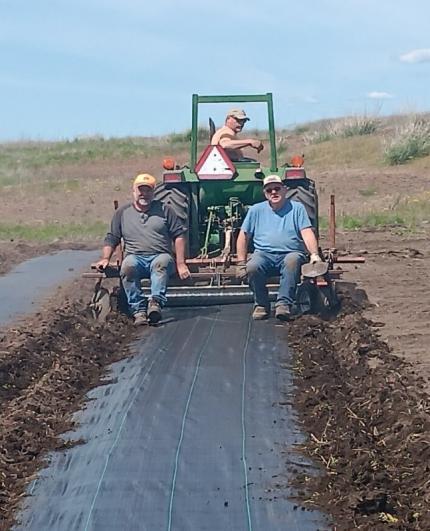
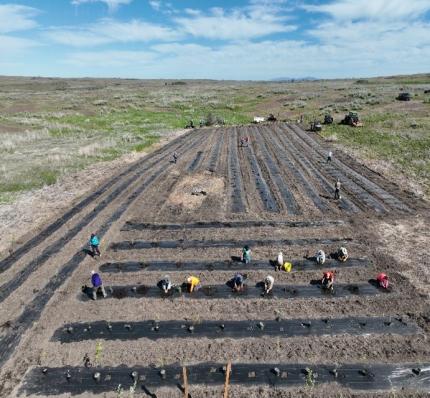
Providing Education and Outreach
Turkey Presentation: Wildlife Conflict Specialist Harris and Officer Beauchene met with a group of first-time turkey hunters at Porcupine Bay Campground to discuss wild turkey biology and management in Washington. The turkey camp was put together by the Armed Forces Initiative and Backcountry Hunters and Anglers.
Medical Lake Middle School STEM Career Night: Biologist Brinkman attended a career night with other Washington Department of Fish and Wildlife (WDFW) representatives at Medical Lake Middle School. Students and parents visited the tables of WDFW and other local organizations that have professionals working in a field related to the STEM curriculum. WDFW provided outreach materials covering various programs (for example, fish, wildlife, habitat, and enforcement) in our agency.
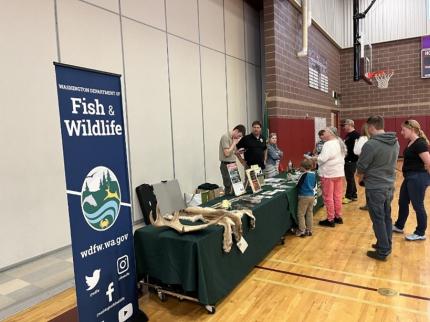
Conducting Business Operations and Policy
General Facilities and Equipment Maintenance and Repairs: Wildlife Area Assistant Manager Palmer repaired part of the field irrigation system coming from Sherman Creek, by the diversion box adjacent to the Inchelium Highway. A section of the pipe was apparently damaged by a vehicle leaving the roadway since the last irrigation season. Palmer cold-welded a hole in the corrugated metal pipe and resealed coupler joints, fixing the leak.
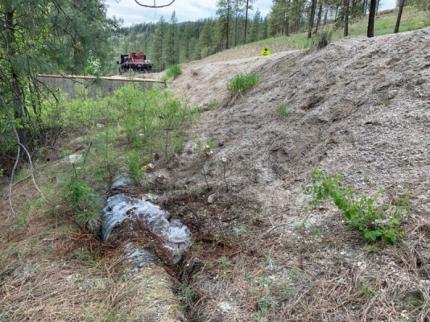

Managing Wildlife Populations
Sage and Sharp-tailed Grouse Lek Searches: Biologist Turnock and Technician Hara continued searching for new sage and sharp-tailed grouse leks in northern Douglas County. High winds have made surveying difficult, but they were able to cover four grids, which will help inform our understanding of these species’ distributions in Region 2.
Sharp-tailed Grouse Translocations: Technician Force assisted staff members in translocating
60 sharp-tailed grouse from British Columbia to Dyer Hill and Swanson Lakes Wildlife Area.
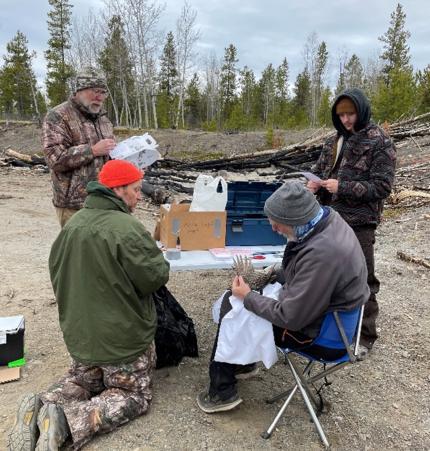
Sharp-tailed Grouse Management: Biologist Heinlen documented a live signal from a female Columbian sharp-tailed grouse released into the Tunk Valley area of Okanogan County during an augmentation effort in April 2023. This will be the second nesting season for this grouse in Tunk Valley since release, which exemplifies the goal of getting new genetics into our local grouse population.
A mortality signal from a male sharp-tailed grouse from the 2023 release in Tunk was also investigated. The radio collar, leg band, and feathers were found near an unmarked fence. It is likely the bird struck the wire fence causing the mortality. Marking wire fences has been documented to reduce grouse mortalities.

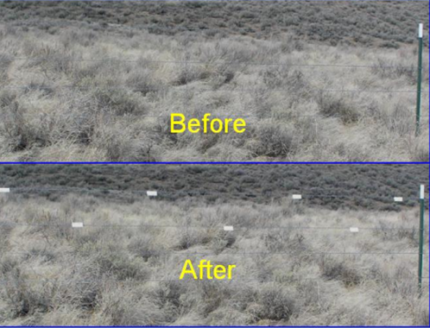
Lewis’s Woodpeckers: Biologists Eilers and Jeffreys, along with other Washington Department of Fish and Wildlife and Chelan Public Utility District biologists, started conducting Lewis’s woodpecker surveys at five project areas in Rocky Reach Wildlife Area. The goal of this year’s cavity nest surveys are to:
- Learn more about Lewis’s woodpecker nesting phenology and ecology of the population within the Rocky Reach Wildlife Area including clutch size, number of eggs hatched, number of hatchlings to reach fledging or late nestling phase, etc.
- Examine these data alongside habitat and microhabitat characteristics for the purpose of drawing inferences regarding nest success of Lewis’s woodpecker at both the local scale and microsite scale (breeding territory).
These inferences may in turn be useful for informing habitat management considerations at the regional scale (North Central Washington). Collecting this data will require staff members to survey assigned grids for the purpose of locating nesting Lewis’s woodpecker pairs within the Rocky Reach Wildlife Area. Staff members will conduct multiple visits to each nest cavity over the course of the nesting cycle. Additionally, they will perform a nest cavity habitat assessment at each nest following the nesting cycle.
So far this year, a variety of Lewis’s woodpecker pairs have been found and are showing signs of courtship (copulation, territorial calling and drumming, wing and flight displays, etc). Lewis’s woodpeckers are migratory to our region and typically arrive on the breeding grounds between the very end of April to early May. It is still at the beginning of the breeding season. As such, it appears that egg laying and incubation haven't started at our survey sites. Biologists will continue to monitor sites throughout the season. Stay tuned for some cute bird photos!
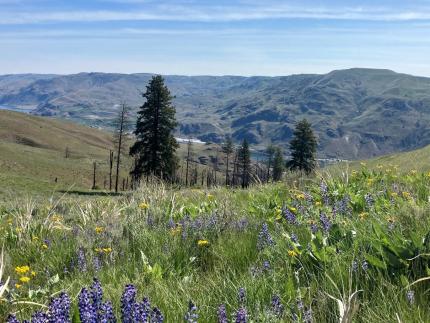
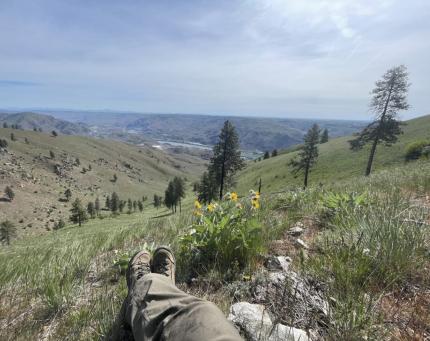
Northern Leopard Frog Surveys: Biologist Turnock and Technician Hara conducted northern leopard frog breeding surveys in District 5, including at the Potholes off road vehicle park. They did not detect any leopard frogs, but these surveys resulted in some exciting incidental observations such as a badger with three young and breeding Great Basin spadefoot toads.
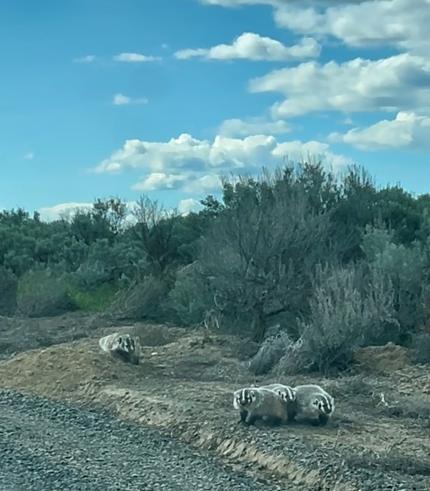
Pygmy Rabbit Trapping: Biologist Turnock and Technician Hara assisted Biologist Crowell with pygmy rabbit trapping at the B3 enclosure near Beezley Hills. They were able to capture the enclosure’s lone resident, an adult male rabbit, to confirm his survival.
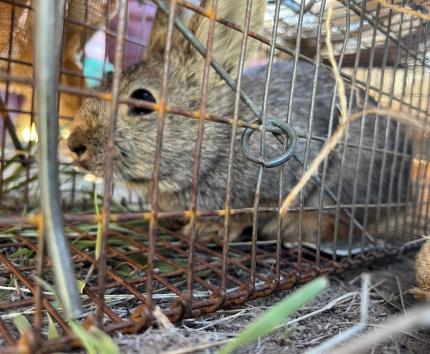
Mule Deer Management: Radio-collars are deployed to help monitor mule deer herd demographics. When mortalities occur, investigations are conducted when possible to determine cause of death. Biologist Heinlen investigated a mortality in GMU 242 and confirmed cause of death as predation. The radio collar was recovered so it can be refurbished and redeployed.
Providing Conflict Prevention and Education
Cougar Information: Specialist Heilhecker received a call from an employee of the California Department of Fish and Wildlife. The caller stated friends living in Snohomish County had a cougar on their ranch. Specialist Heilhecker discussed cougar safety information with the caller and provided contact information for the wildlife conflict specialist in Snohomish County.
Responding to Cougar Reports: Specialist Heilhecker received a call about a cougar killing chickens. They discussed keeping the chickens contained and inaccessible to the cougar. The reporting party was concerned for their family’s safety. Heilhecker advised the reporting party of their rights to put the cougar down if they felt in danger.
Responding to Cougar Reports: Specialist Heilhecker responded to a cougar sighting report. The reporting party submitted security camera videos of an adult and juvenile “cougars” near their porch. After reviewing the video, Specialist Heilhecker spoke with the reporting party. The juvenile “cougar” was a domestic cat, and the adult cougar was likely a dog, but she encouraged the reporting party to submit any future videos for more complete verification.
Conserving Natural Landscapes
State Acres for Wildlife Enhancement-Conservation Reserve Program: Biologist Cook visited with a landowner to give advice for rolling a current general Conservation Reserve Program (CRP) contract over into State Acres for Wildlife Enhancement (SAFE). The field failed for the current contract and the landowner and operator were looking for confirmation with a Natural Resource Conservation Service (NRCS) field visit to determine what they could do to prepare to move into SAFE. This landowner has other fields enrolled in SAFE contracts where plans were written by the Department of Fish and Wildlife, and a strong relationship currently exists.
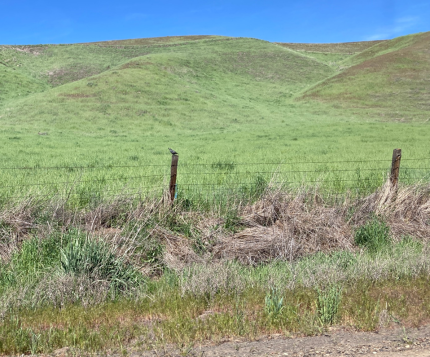
Habitat Plots: Biologist Cook and Technician Blanchard tilled and applied herbicide to prepare supplemental food plots for planting later this month. Planting has been postponed due to delays with irrigation installation and to improve weed control, however they will be irrigated so they should still grow well.
Private Lands Biologist Braaten assisted Swanson Lake Wildlife Area staff members and volunteers in laying fibrous mulch for a Pheasant Forever habitat project. Installation of ten 300-foot rolls of mulch were laid with specialized equipment. This will benefit sharp-tailed grouse and upland birds in the future.

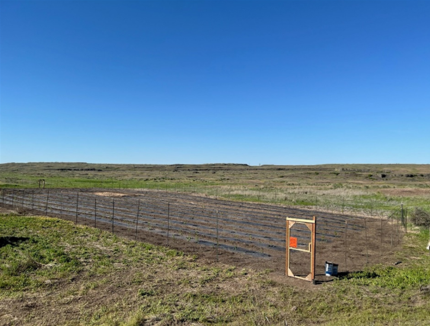
Providing Education and Outreach
Snake Day 2024: Biologist Fitkin and retired U.S. Forest Service Biologist Rohrer conducted the annual snake survey on a portion of the Methow Wildlife Area. This survey was a part of an adult (and some kids) education class for the North Cascades Institute (NCI). Warmer than normal temperatures had snakes often hiding in the shadows, but we located 15 individual snakes from three different species during the class and had two other species on hand to share with participants.
The data is an indicator of abundance and species diversity over time and gives us an opportunity to monitor for snake fungal disease (no suspect legions found). The proceeds from the course support NCI’s Mountain School program for kids. Thanks to Regional Diversity Biologist Gallie and his daughter for joining this year’s event.

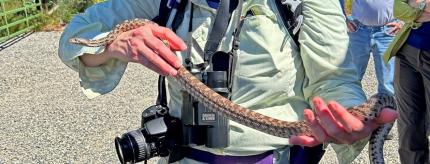
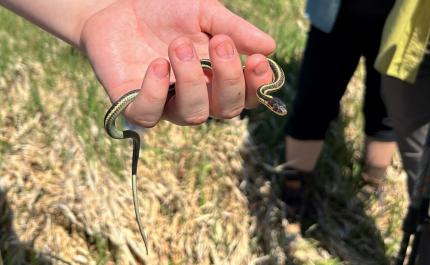
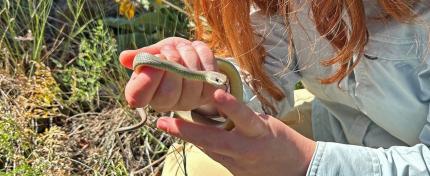
Wildlife Coexistence: Biologist Fitkin gave a presentation on wildlife coexistence to a 7th grade Environmental Studies class at Liberty Bell High School in Winthrop. The talk emphasized living with bears and snakes and the students got hands on experience with the engaging reptiles as well as the opportunity to practice deploying bear spray (with inert ingredient cans).
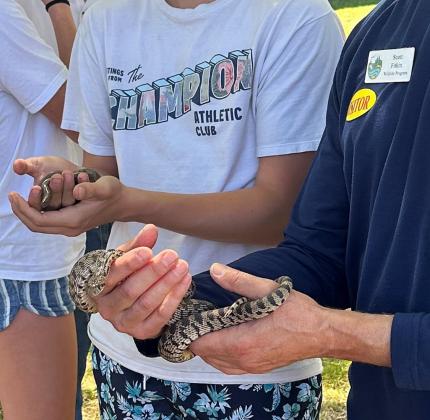
Abandoned Horse: Specialist Heilhecker received a call about a horse dumped on Public Utility District land. The reporting party asked if Washington Department of Fish and Wildlife wanted to investigate. She told the reporting party that investigations occur at the request of the owner. If the reporting party wanted the horse removed, to contact the landowner.
Oden Road Fire Study with Okanogan High School: Regional Wildlife Program Manager Haug, Assistant Wildlife Program Manager Troyer, and Regional Communications and Outreach Specialist Jordan attended the annual Oden Road Fire Study put on by the Okanogan Land Trust and Okanogan High School’s Advanced Biology class.
This was the 12th year of the study (the last year for Haug) that looks at the effects of wildfire on a landscape level. Representatives from Washington Department of Fish and Wildlife, the Washington Department of Natural Resources, Okanogan Conservation District, Confederated Tribes of the Colville Reservation, and Okanogan Land Trust were in attendance and providing their expertise. The students gathered data on soils, vegetation, bird diversity, and insect activity and will present their findings to a large audience later next month.
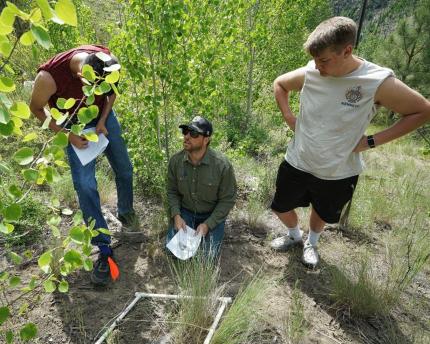
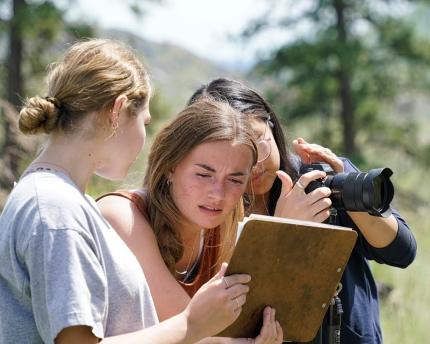
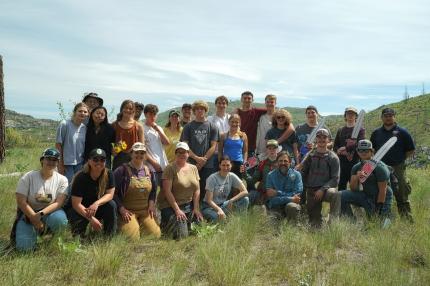
Scotch Creek STEAM Event with Tonasket and Oroville Elementary: Regional Wildlife Program Manager Haug, Scotch Creek Wildlife Area Manager Dupont, Scotch Creek staff members, Sinlahekin Wildlife Area staff members, Department of Natural Resources Specialist Medina and volunteers worked with staff members from the North Central Educational Service District (NCESD) and Tonasket and Oroville elementary schools and held a Science Technology Engineering Arts and Math (STEAM) field trip to the Scotch Creek Wildlife Area, Beaver Dam Analog Project. Over two days, Tonasket and Oroville elementary schools brought nearly 100 students to the Scotch Creek Wildlife Area.
The purpose of these visits was to take their classroom science learning into the field for an authentic science experience. Students worked alongside scientists to collect data, engineer water retention devices, plant and identify important plant species and paint their observations all in their efforts to learn more about how science is helping conserve the state-endangered sharp-tailed grouse in Okanogan County.
As part of the field trip Scotch Creek Wildlife Area staff members installed Beaver Dam Analogs (BDA) as part of a Recreation and Conservation (RCO) funded state lands restoration project along a stretch of Scotch Creek over the past four years. Students learned that the purpose of the BDAs is to slow the water flow of the creek and increase water retention to support the growth of water birch. Water birch is an important plant species for winter survival of the endangered sharp-tailed grouse.
Haug gave a short presentation on sharp-tailed grouse and Wildlife Area Manager Dupont discussed the construction and use of BDAs (Scotch Creek staff built a mock BDA and river system simulation where students observed hydrologic affects).
Students spent their day rotating through different stations. At the planting station, students learned to use a dichotomous key to identify native plants commonly found in the shrubsteppe. Students also explored stream transects with Confederated Tribes of the Colville Reservation Fish and Wildlife Department. Students used scientific tools to calculate the volume of water in the stream and looked at ground water levels before and after a BDA installation.
Half the group rotated out to do insect collection and identification. They also built their own water retention devices using recycled bottles and natural materials to see if they could slow the flow of stream water. And finally, students had an opportunity to put their observations to paper in a station led by a Tonasket art student. Students used watercolor to capture the scenery around the project site.
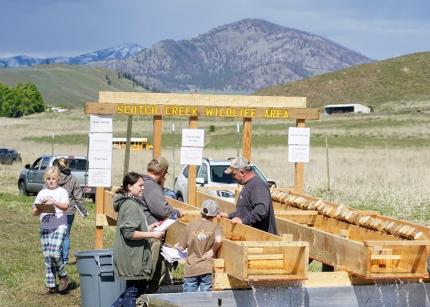
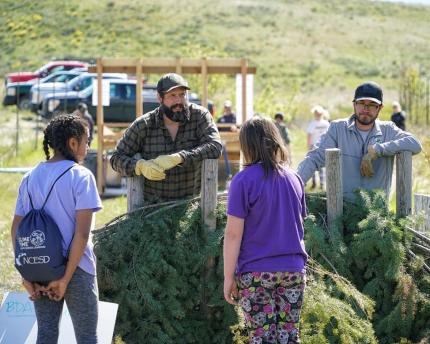
Wild Washington Outdoor Classroom at Beebe Springs: The Wild Washington Outdoor Classrooms (WWOC) is a pilot program expanding our current offerings by bringing students to a wildlife area near them for experiential learning to hone skills taught in lessons in outdoor and real-world applicable settings. Given Beebe Spring’s unique landscape diversity and rich cultural history, the program weaves together scientific inquiry with cultural knowledge of the area.
The program was a “choose your own adventure” where students decide which investigation path most interests them. Students moved through their chosen investigations that were led by local experts from Cascade Columbia Fisheries, U.S. Fish and Wildlife Service, Northcentral Washington Educational Services District, and the Confederated Tribes of the Colville Reservation. Because of the diversity of Beebe Springs, activities included: designing beaver analogue dams, measuring biodiversity, wildlife viewing, predicting landform erosion, sound mapping, storytelling, watercolor painting, wild food preparation and more. The Wild Washington Outdoor Classroom Program will give students a chance to meet local natural resource practitioners, elders, and artists and experience career connected learning.
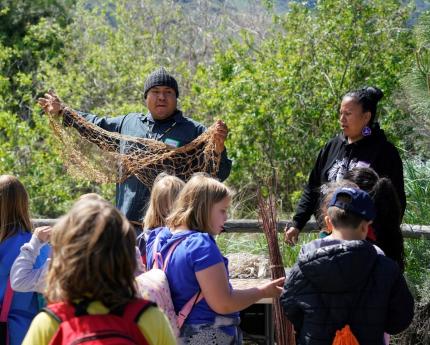
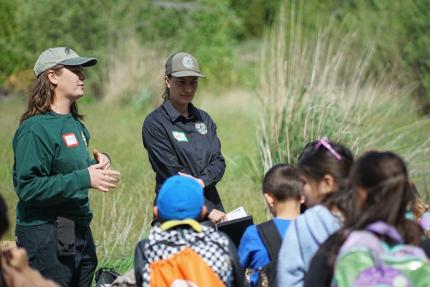
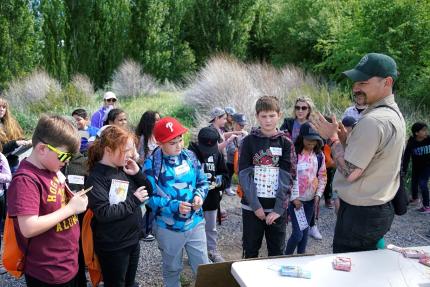
Conducting Business Operations and Policy
Cost Share Fencing Contract: Specialist Heilhecker completed a payment form for cost-share fencing materials to prevent deer damage. She submitted the paperwork to Wildlife Conflict Program staff members.
Cooperative Agreement: Specialist Heilhecker completed cost-share payment paperwork for a livestock producer with a Damage Prevention Cooperative agreement. She submitted the paperwork to the Wildlife Conflict Program.
Other
Gallery Photos:
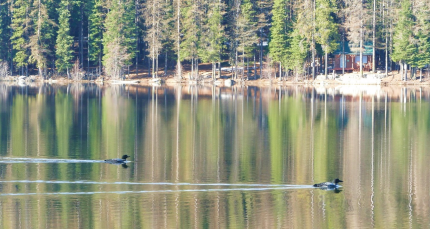
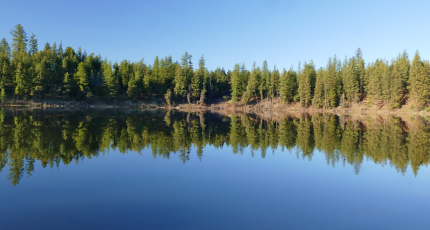
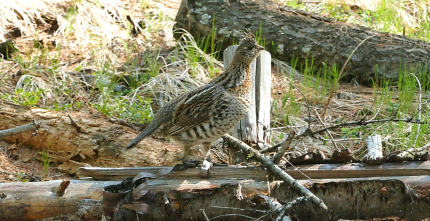
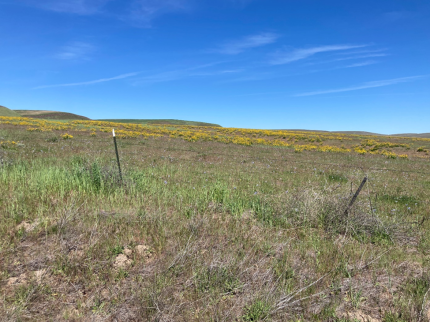
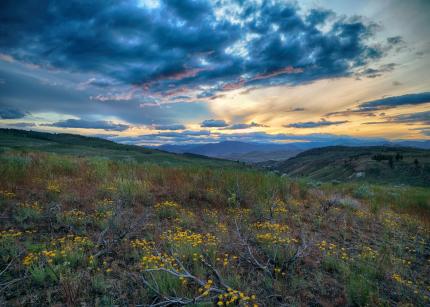
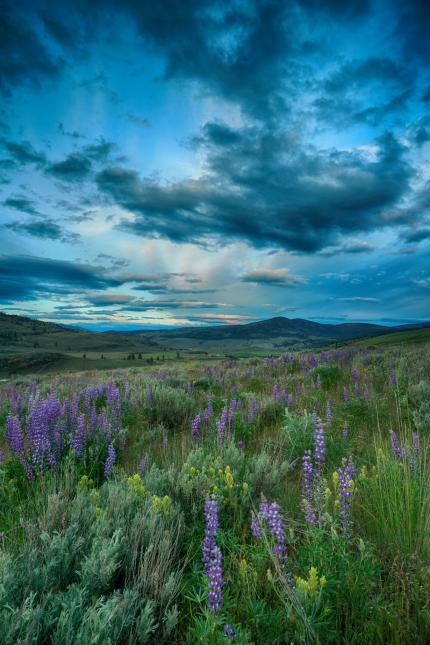
Managing Wildlife Populations
Townsend Ground Squirrel Monitoring: District 8 Wildlife Biologist Wampole and Assistant Wildlife Biologist Moore continued to survey for Townsend ground squirrel colony sites. Ground squirrels were once common. Washington Department of Fish and Wildlife has noticed declines in historically occupied sites. To better assess this, biologists have been working to assess historic site status and identify new locations of colonies to determine if breeding is occurring.
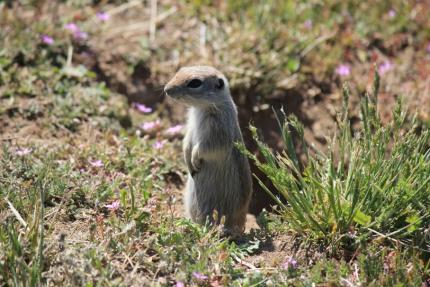
District 8 Bat Monitoring: District 8 Wildlife Biologist Wampole and Assistant Wildlife Biologist Moore started monitoring the arrival of bats to summer maternity sites. Maternity sites are monitored for white-nose syndrome and population trends. There are two key sites receiving experimental vaccinations and treatments to combat the deadly fungal disease.
Teanaway Community Forest Spotted Owl Surveys: District 8 Wildlife Biologist Wampole, Habitat Biologist Meyers, and Diversity Division Wildlife Biologist Kohler joined forces to begin the deployment of autonomous recording units (ARU’s) for monitoring spotted owl populations in the Teanaway Community Forest. ARU’s automatically record calls of birds and other species in the area. Assessment of the audio recordings will allow biologists to determine the presence of spotted owls and determine sex of those individuals from their call patterns.
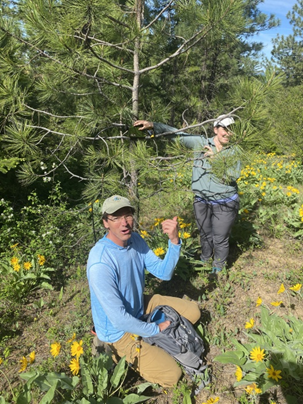
Bighorn Sheep Monitoring: District 8 Wildlife Biologist Wampole and Assistant Ungulate Specialist Kyle conducted surveys for new lambs in the Movi-positive Yakima herd. Wampole and Kyle also worked to retrieve and sample a natural mortality of the Movi-positive ewe from the Umtanum South sub-population where active infections were found in the winter 2024 capture and test effort.
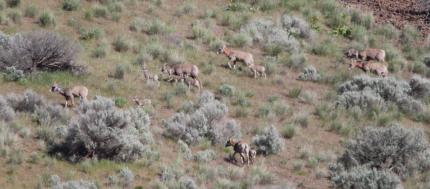
Burrowing Owl Transmitter Project: District 4 Wildlife Biologist Fidorra received locations from partner researchers regarding two burrowing owls with transmitters in unusual locations in Douglas and Yakima counties. Despite multiple attempts of various efforts using UHF, playback, and visual searches, neither owl was located. Due to the technology, it can be difficult to track birds to a specific location so more data will need to come in from the satellite before knowing the location or fate of these two owls.
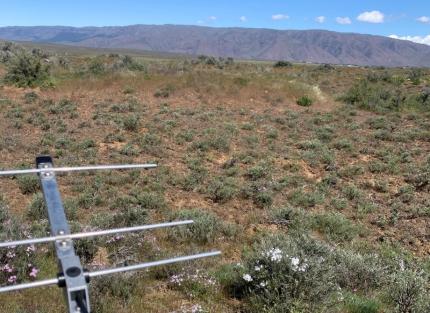
Burrowing Owl Nest Project: District 4 Wildlife Biologist Fidorra and Assistant Wildlife Biologist Hoffman began nest checks at artificial burrow sites near Pasco. Most nests have already hatched with many young clutches detected. After a mild winter, many owls were onsite early, and breeding is ahead of schedule with most available sites occupied.
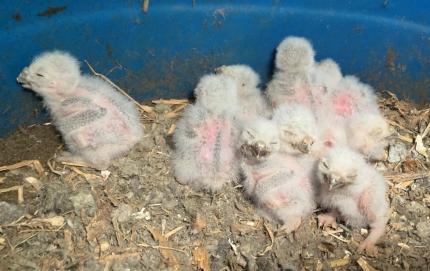
White-nose Syndrome Probiotic Study on Bats: District 4 Wildlife Biologist Fidorra and Assistant Wildlife Biologist Hoffman, and Sunnyside Snake River Wildlife Area Manager Kaelber assisted staff members and partners to capture, assess, band, and tag little brown and Yuma myotis bats at a colony in Yakima County. This location will be used as a control site for the probiotic study attempting to identify preventative treatments for white-nose syndrome. Approximately 60 bats were sampled.
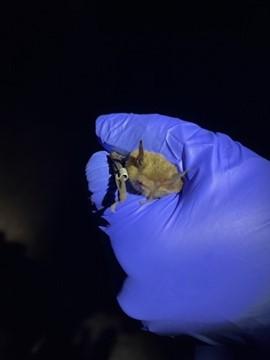
Porcupine Rescue: District 4 Wildlife Biologist Fidorra responded to a call about a porcupine that had been staying under a car for several days on a busy street in Pasco with no suitable habitat in near vicinity. Fidorra and Conflict Specialist Hand quickly trapped the animal and moved it to a nearby natural area.

Diversity Grant Review: District 4 Wildlife Biologist Fidorra reviewed and scored applications for the new wildlife diversity grants.
Providing Recreation Opportunities
Wenas Wildlife Area Durr Road Shooting Range Coordination: Wenas Wildlife Area Manager Gray, Archeologist Barrick, and Environmental Engineer Hansen met with members of the Yakama Nation to discuss the Durr Road Shooting Range. Gray expressed how the range will improve safety, lower the risk of wildfires, and lower the amount of garbage left behind by providing the public a developed site to use. They discussed the importance and history behind harvesting food for the Yakama Nations. They also discussed the need for improvements on communication. The meeting went well, and it was a good opportunity to discuss target shooting and the Durr Road Target Shooting Range. The new range should be completed and ready for use in June of 2024.
Oak Creek Wildlife Area Winter Closures Open: Oak Creek Wildlife Area staff members and volunteers opened all winter closure public access gates on May 1 at 6 a.m. Over 100 vehicles, various hikers, and horseback riders were waiting at the gates at 6 a.m. to enter the winter closure areas to search for elk antler sheds. Winter closures on the Oak Creek Wildlife Area aid in the protection of wintering wildlife, specifically elk, that are in high concentrations near winter feed sites and are within their winter recovery period.
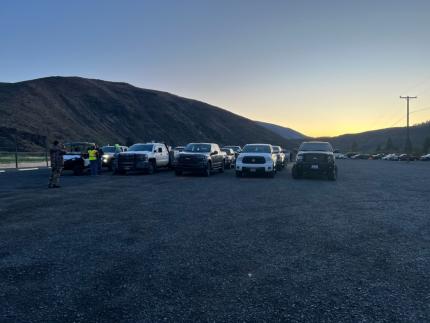
Providing Conflict Prevention and Education
Rattlesnake Hills Elk: District 4 Wildlife Conflict Specialist Hand monitored elk activity and conducted late night hazing activities near the border of the Hanford National Monument. Several landowner meetings were conducted to coordinate damage permit hunting and hazing activities.
Corral Canyon Elk Area Summer Bull Permits: District 4 Wildlife Conflict Specialist Hand delivered Damage Prevention Permits (DPP) to landowners in elk area 3721. These permits were the first to be developed and issued from the new Damage Permit System platform and will be used to pressure elk away from commercial crops.
Ice Harbor Deer: District 4 Wildlife Conflict Specialist Hand monitored deer activity and damage impacts at a large tree fruit and blueberry farm near Ice Harbor Dam along the Snake River.
Prosser Marmots: District 4 Wildlife Conflict Specialist Hand received and responded to a complaint of yellow-bellied marmots causing damage at the Whitstran Elementary School near Prosser. They provided information on deterrence strategies and contact information for local Wildlife Control Operators.
Oak Creek Wildlife Area Signage: Oak Creek Wildlife Area Assistant Manager Charlet had four signs updated and reprinted for various locations on the wildlife area. These signs have been updated to follow the new Washington Department of Fish and Wildlife sign standards and guidelines.
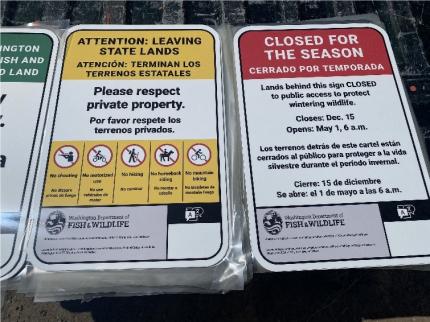

Conserving Natural Landscapes
Wenas Wildlife Area – Sheep Company Target Shooting Clean-Up: Wenas Wildlife Area Lands and Recreation Specialist Frame collected 360 pounds of trash and target shooting material from the Sheep Company Target Shooting Range. Notable items were a toilet and dishwasher.
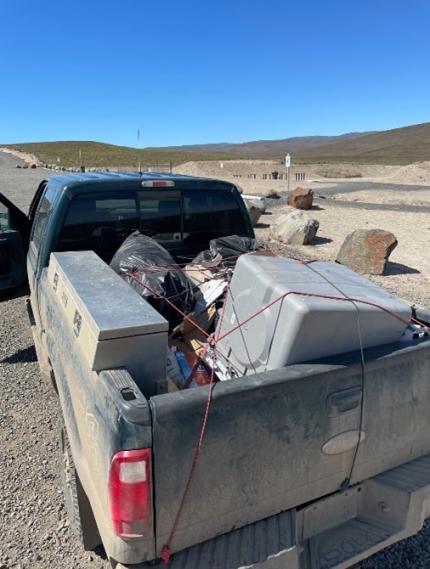
Wenas Wildlife Area Spring Weed Treatments: Wenas Wildlife Area staff members continue to treat the wildlife area for noxious weeds. This time of year, common targets are Scotch thistle, Canada thistle, and whitetop. Preventing the encroachment of these noxious weeds is an essential aspect of maintaining the natural landscapes on the wildlife area.
Oak Creek Wildlife Area Noxious Weed Control: Oak Creek Wildlife Area Assistant Manager Charlet and Natural Resource Worker O’Brien continue to chemically control noxious weeds on the Cowiche and Oak Creek units. Spot spraying reduces the presence of Scotch thistle and other various noxious weeds on Washington Department of Fish and Wildlife lands and helps conserve and maintain natural landscapes.
Private Land Shrub Plantings: Region 3 Private Lands Biologist Manderbach and Wildlife Biologist Fidorra planted native shrubs on private lands in Franklin County that burned in 2020 and lost most all shrub cover. Sagebrush plantings from the year prior were doing well, but other species planted appeared to be browsed fatally by deer and cattle. New shrubs were added to augment the plot and browse protections will be implemented.
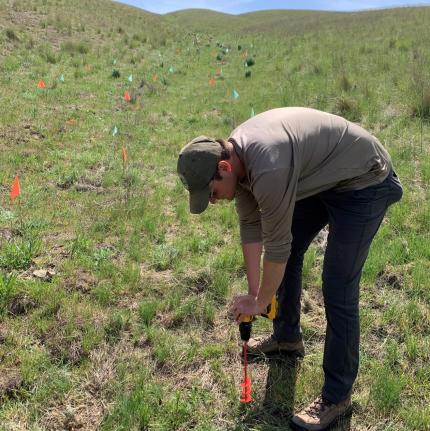
L.T. Murray Wildlife Area Weed Control: L.T. Murray Wildlife Area Assistant Manager Winegeart hired Central Valley Helicopters to aerially treat 64 acres of the perennial weed, whitetop (Cardia draba), within the footprint of the 2022 Vantage Highway Fire. The lack of overhead cover makes this a good time to reach and treat remote weed populations.

Teanaway Valley Unit Restoration Site: L.T. Murray Wildlife Area Manager Morrison and Assistant Manager Winegeart walked the L.T. Murray Wildlife Area’s Teanaway Valley Unit. They accessed the unit’s need for future attention. Restoration has been ongoing on the unit for several years, but the Recreation and Conservation (RCO) Grant is now closed. Wildlife area staff members will work hard to protect the work done and ensure success of the site’s structural improvements and weed control efforts performed over the years by Mid-Columbia Fisheries.
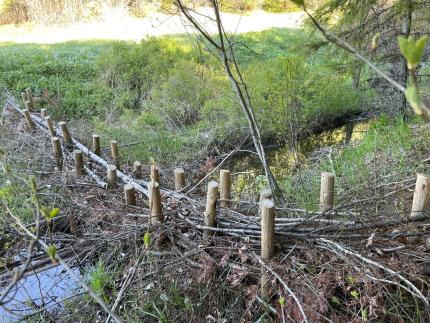
South Ridge Road Site Visit: Region 3 Private Lands Biologist Manderbach met with South Yakima Conservation District staff members, an engineer from the Central and East Klickitat Conservation District, a member of the Audubon Society, and the landowner of the property enrolled in access as the South Ridge Road property. The meeting was focused around the development of a natural spring to increase flow and provide a solid pool of water for wildlife use and to allow for future habitat development.
Past habitat projects were also viewed and plans to expand on them were discussed. Senior Program Manager Hulett from Audubon discussed plans for sage grouse surveys on this property as well as others in Yakima and Benton counties. The spring development project should get rolling this summer which would allow for habitat expansion later this year or next year.
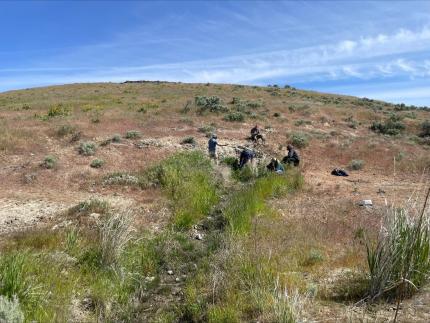
Providing Education and Outreach
Salmon Celebration: Sunnyside Snake River Wildlife Area Manager Kaelber and Natural Resource Technician Edwards presented at a recent salmon release event in Sacajawea Park. Students learned about the types of animals found in Washington and were able to touch furs, skulls, and antlers.
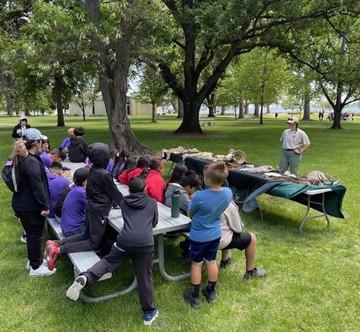
Conducting Business Operations and Policy
Wenas Wildlife Area RCO Grant Application: Habitat Specialist Miller has been working on a grant application through the Recreation and Conservation Office (RCO). Grants through RCO require a multi-step process that involves several different presentations of proposed projects. Funds awarded through these grants are often used to acquire new lands for wildlife areas and supplement funds for the improvement of existing sites.

Other
American Badger Sighting: Natural Resource Specialist Frame spotted an American badger in the Cleman Mountain area.

Quilomene Unit Visitors: Domestic bison from a neighboring landowner's pasture made their way to WDFW's L.T. Murray Wildlife Area Quilomene Unit in search of green grass and water. Their white faces give them an awe-inspiring presence when meeting face to face on the landscape. It was fun while it lasted but the visitors had to return home in absence of a grazing permit.

Managing Wildlife Populations
Sandhill Crane Surveys by Drone: Biologist Bergh enlisted the help of Remote Sensing and GIS Analyst Jansen and GIS and Data Support Analyst Simper to get aerial imagery of three different sandhill crane nesting areas. The group used three different types of drones and tried regular (RGB) imagery as well as infrared (IR) imagery to identify sandhill crane nests.
Bergh, Jansen, and Simper tried different heights above the ground, both with speed and with the drone stationary. After several days of flying, they determined which drone, imagery, and height would be optimal for spotting nests. They found nests at two of the three sites, although not all of the imagery from the third site has been searched. Disappointingly, the IR imagery did not seem to be useful since it was impossible to differentiate cranes from other waterfowl and even with cloudy skies and cool temperatures, the wetland vegetation appeared “warm.” Next year’s drone survey flights should be more straightforward with the information learned this year.

Northwestern Pond Turtle Hatchling Collection: Biologists Bergh, Wickhem, and Ott spent time collecting hatchling northwestern pond turtles (NWPT) the size of silver dollars to send to the Oregon Zoo as part of the northwestern pond turtle “headstarting” program. The goal of the program is to grow the hatchling turtles to a size of 50 to 100 grams. By the time they reach that size, they are better, faster swimmers, and too large to be swallowed by bullfrogs. Bullfrogs are not native to the Pacific Northwest and easily prey on northwestern pond turtle hatchlings, which is one of the causes of northwestern pond turtle declines in Washington.


Headstart Turtle Notching: Biologists Wickhem and Ott visited headstarted northwestern pond turtles at the Oregon Zoo this week. The turtles were brought to the zoo as hatchlings in May 2023. Under the care of zoo staff members, they can grow larger in a safe setting and be released back into their natural habitat at a size that allows them to more easily avoid predators.
Wickhem and Ott assigned these headstarted turtles identification numbers and put notches in their shell scutes using a triangle file. These notches do not harm the turtles and will help staff members identify these individuals the next time they are captured in the field. Wickhem and Ott also took weights and shell measurements and checked PIT tags on all the headstarts.
The captive cougar, Pai, supervised the headstart activities from his neighboring enclosure, which has become a welcome tradition. These turtles will be released at a site in Skamania County in late May.
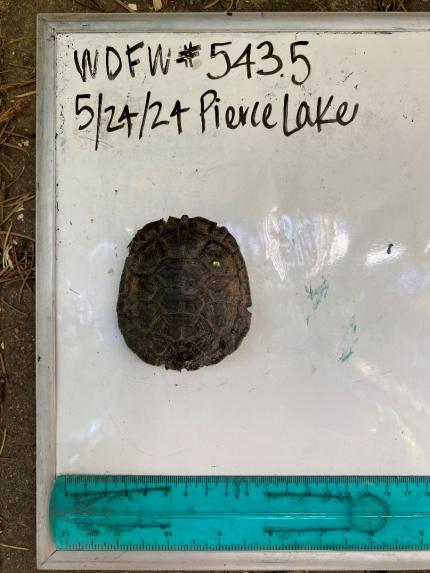
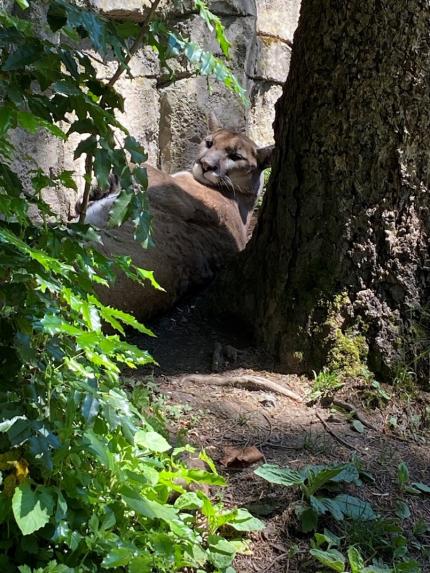
Conserving Natural Landscapes
Mudflow Unit Opens After Winter Closure: On the first day of May, Technician Crane removed “No Trespassing” signs on the Mudflow Unit of Mount St. Helens Wildlife Area that were posted for the winter closure. The Mudflow Unit’s annual winter closure is in effect from Dec. 1 through April 30 to ensure minimal disturbance to elk on their over wintering grounds.
The opening of the Mudflow Unit on May 1 each year is popular for shed hunting. While removing signs, Technician Crane observed six shed hunters on the Mudflow Unit, most of which were successful in legally collecting antlers.
